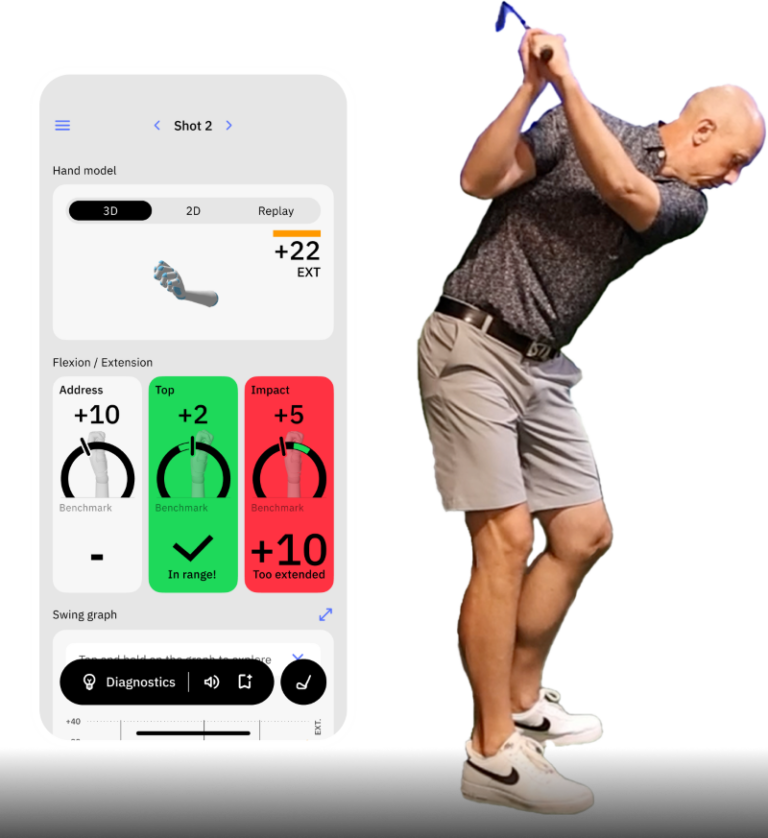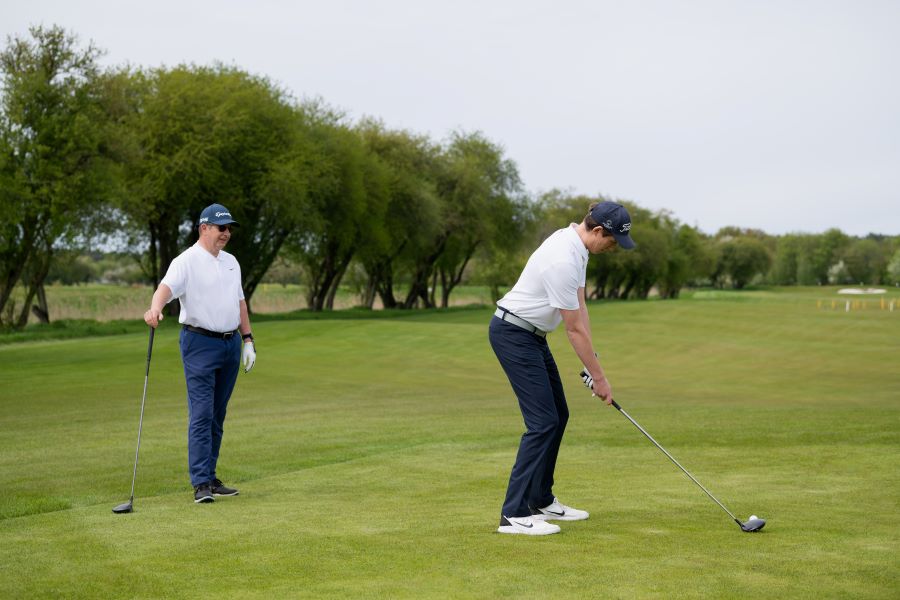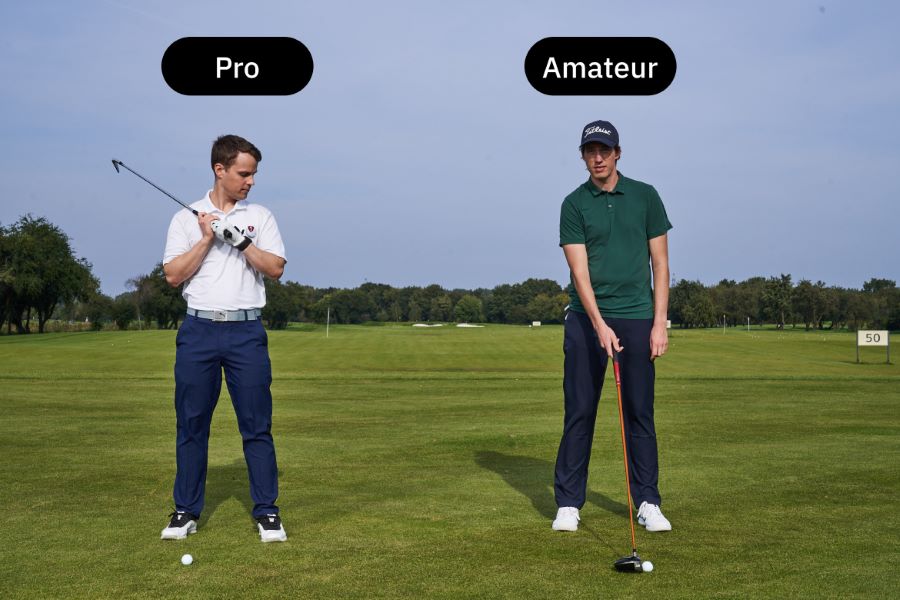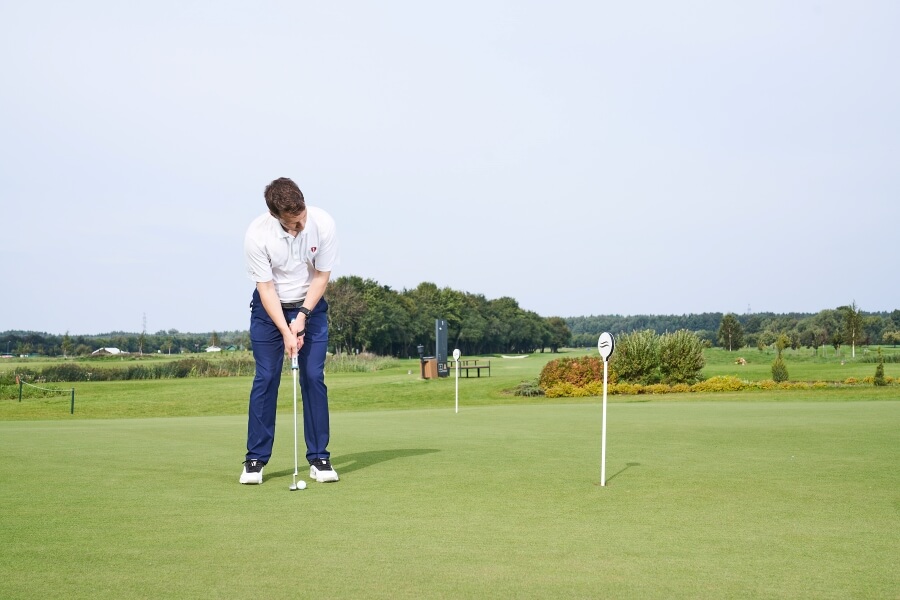12 Essential Golf Course Management Tips You Can’t Miss
At HackMotion, we talk a lot about how to swing the golf club. However, at some point, when you can swing the golf club well, and you are hitting the shots you want to hit, you have to learn to play the game.
Golf course management is what separates the smart players from the not-so-smart.
Our golf course management tips will apply regardless of your current golf handicap. You can implement a golf course strategy like this the same day you learn it, and we highly suggest you do.
Golf Course Management Tips: Key Takeaways
I encourage you to read through all of my golf course management tips, but if you only have time for the key elements right now, here is what you need to know:
- To get good at golf course management and golf course strategy, you have to know how to analyze a golf course; you are no longer looking at just the hole. Take into account the hazards, the rough, the wind, the slopes, etc.
- Golf course management starts at the tee box, and it doesn’t end until the ball is in the hole.
- Controlling your ego and emotions is part of proper golf course management.
- Doing some preparation the day before a round of golf can make all the difference when it’s time to implement your golf course strategy.
- Knowing how to control the clubface of your golf club makes golf course management a lot easier.
Contents
- What Exactly is Golf Course Management?
- 12 Golf Course Management Tips
- Choosing the Right Club from the Tee Box
- Where to Miss
- High or Low Shots
- Know How (and When) to Work the Ball
- Take Your Medicine
- The Pin is Not Always Your Target
- Know Your Distances and Hit Them
- Driving Range vs. Golf Course Mentality
- Track Golf Stats
- Have a Safe Swing and Safe Putting Stroke
- Manage Risks
- Course Conditions Matter
- Final Thoughts
What Exactly is Golf Course Management?
Golf course management is the way that you play your round of golf. As a golfer, you must manage what clubs you hit, what shots you plan to execute, and how you think the golf ball will respond to course conditions.
Good golf course management leads to lower scores; it’s as simple as that.
12 Golf Course Management Tips
Here are 12 golf course management tips that you can implement in your golf game today. Take a good look at your current strategy on the golf course and see where you may be lacking.
Choosing the Right Club from the Tee Box
You step up to the tee box, driver in hand, ready to go on all the par 4’s and par 5’s, right?
Wrong.
A driver is a special tool in your golf bag. It goes the furthest, it has a high reward level, but it has a high-risk level as well. The more I play a golf course, the more I move to my 3 wood and 5 wood off the tee.
Why is that?
Because over time, you learn how a golf hole is and how it plays, and the importance of hitting your spot in the fairway. With a 3 wood or a 5 wood off the tee, that should be quite a bit easier to do.
This is not to say that the driver should never come out of the bag, because it should.
However, to be a great player, you must make a CHOICE on the tee box. Every tee box is a choice, not just a given that you will put the driver into play.
Keep your ego and emotions in check when you choose the club. We all know you can hit it far, ask yourself how that benefits you on the tee shot you are about to hit.

Where to Miss
Where to miss the golf ball is kind of a complicated thought, but you will get the hang of it if you dedicate the time.
You know exactly where you want to hit the ball, but you probably don’t think about your misses often enough. Ben Hogan once said, “Golf is a game of misses,” and he couldn’t have been more accurate.
Think about where things went wrong in your last golf round; likely, it is where a missed shot went somewhere that made a recovery difficult. Did you leave an approach shot in the sand?
What about a short chip that skulled across the green?
Here’s how to go about knowing and choosing where to miss:
- Spend some time practicing your golf game and recording data using tools like HackMotion, so you know what your misses typically are. Most players have a hook, slice, fade or draw that can come out unexpectedly.
- When executing a shot, choose the exact spot you would like to land the ball.
- Now consider your most common miss. If you aim at that target, does your current miss leave you in a world of trouble, or are you safe?
- Adjust the target spot accordingly.
For example, my miss is a draw, a bigger draw than the one I intend to hit. If I’m going at a pin on the left side of the green and there is trouble left of the pin, I’ll go at the center, or even right side of the green, to give myself the best chance at a birdie, but also leave my ball in play.
High or Low Shots
Not all golf shots should be on the same trajectory. To be a great player, you must know how to control the flight of your golf ball.
Whether you are dealing with windy conditions or you simply need to punch the ball out from under a tree, controlling your shot trajectory is important.
The best way to learn to do this is to start with one golf club and have a high and a low shot you can hit with that club, then move on to the other clubs in your bag. Typically speaking, you can follow these tips to hit a high and a low golf shot.
- To hit the ball higher, play it just a little further forward in the stance, try to have a slightly open clubface at impact, and keep the swing tempo smooth with a big high finish. The angle of attack can be a little steeper as well.
- To hit the ball lower, play it just slightly back in your stance, keep the swing compact, hold the finish a little lower, and have more shaft lean at impact.
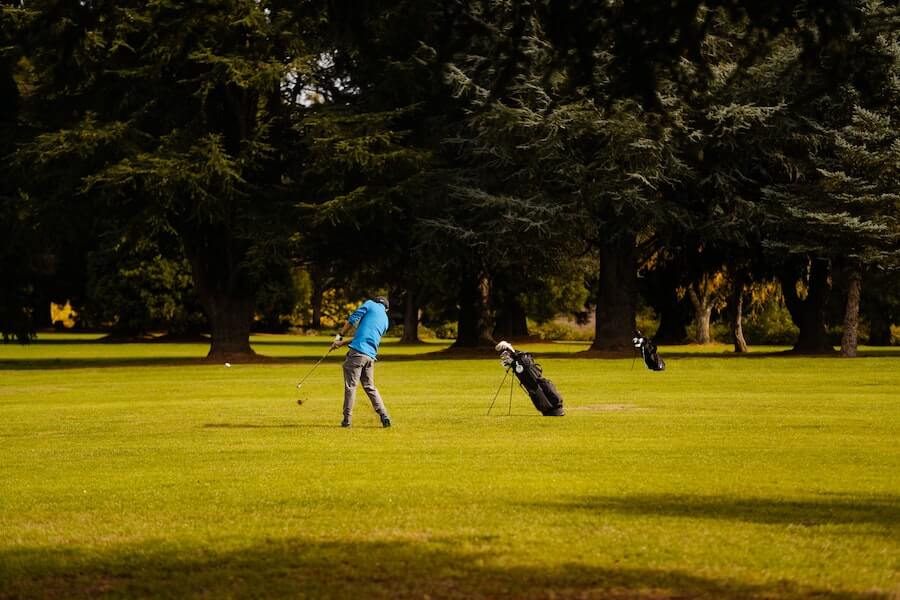
Know How (and When) to Work the Ball
If you want to get really good at golf course management, you have to know how to work the golf ball.
If I put three golf balls in front of you, could you hit one with a draw, one with a fade, and one straight? Most golfers cannot.
During a golf round, you will have opportunities to work the ball and hit a draw or a fade to get closer to a pin or out of trouble. Great players take these opportunities, and they execute the shot.
To learn to hit a draw or a fade, you have to have control over the clubface of your golf club. To gain this control, you must understand the role of wrist action in the golf swing. All of this can be learned using HackMotion.
HackMotion measures your wrist angles at setup, the top of the backswing, and impact. When you can keep the clubface a little more open (slightly higher lead wrist extension) at impact, you should be able to benefit from a fade.
When you keep the clubface a little more closed (slightly higher lead wrist flexion) at impact, you should see the draw ball flight.
Practicing with the HackMotion can make course management much easier because you will have more shots to pull out of your bag when you need them the most.
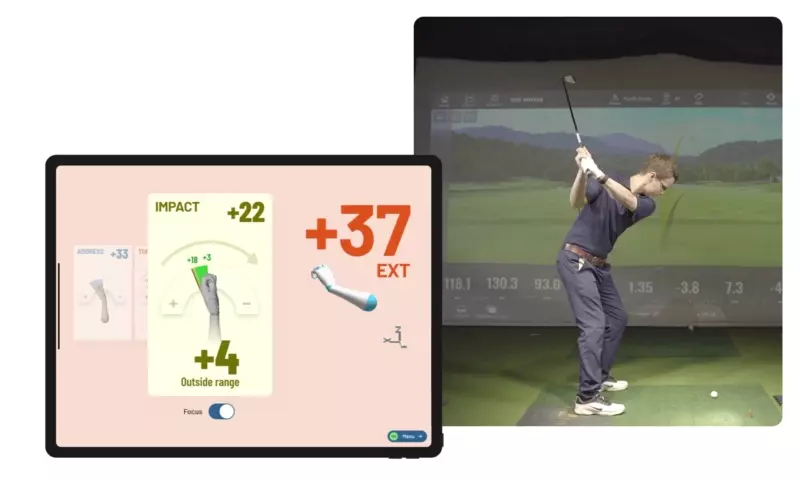
Take Your Medicine
You may have heard the term take your medicine in golf. The point here is that when you make a mistake, you need to accept it and move on.
Let’s say you hit a slice with your driver off the tee box. The slice puts you in the woods behind a tree with a very small window of opportunity to make it to the green. Of course, this is frustrating, but you have to take your medicine.
Take the small punch out of the woods, put the ball back in play, and go from there. You still have a chance to hit a great approach shot and make a putt to save the hole.
The problem is when golfers go for the hero shot. They try and weave a golf ball through a series of 20 trees, only to have it hit one and end up further in the woods or even out of bounds.
Don’t do this unless it makes sense, and you can pull it off 9/10 times. The risk has to be worth the reward.
The Pin is Not Always Your Target
Do you always aim at the pin when you play?
Aiming at the pin can be poor golf course management that costs you strokes in every round.
When choosing where to land your approach shots, you must look at the entire green, not just the pin. The pin is your end goal, but by getting too aggressive, you could cause more problems for yourself.
Whenever possible, you want a straight uphill putt to the pin. Look around and see where you can land the ball to have the highest chance of that happening. In addition, consider your typical miss and where that could leave you.
If a pin is surrounded by bunkers or a water hazard, leave yourself a 15-foot putt, it’s perfectly acceptable.
The point here is you don’t always have to go directly at the pin to get the best results on the course.

Know Your Distances and Hit Them
There are two pieces to the distance puzzle.
First, you should be playing with a distance measuring device that gives you a number you can trust. The days of pacing off yardages are done. Know what the exact distance is to the hole or even the center of the green on every shot you hit.
Next, you have to know YOUR distance. How far do you hit a 7-iron? How far do you carry it? How far does it travel in total?
Combine the knowledge you have of how far the hole is with the knowledge you have about your golf club distances and make an informed decision. Remember there is no reason to cheat yourself here; if you hit a 7 iron 140 yards, stop pulling it out as your 150-yard club.
Be honest with yourself, and you will see big changes in your scoring.
Driving Range vs. Golf Course Mentality
The mentality on the golf course and the driving range are often different. On the range, you have no fear because the shots you take are not going to impact your score. On the golf course, you swing with more fear and control for fear of missing a shot and getting into trouble.
I have found that combining the two mentalities is the perfect combination for better golf course management.
The next time you go to the driving range, start making shots count. Pick a target, hit one ball, and then pick another target. Play a golf course in your mind and challenge yourself to execute.
The next time you go to play a round of golf, trust that you have put the time in on the driving range and you know how to swing a club. If you don’t allow yourself to swing and actually go after the golf ball, you will never know your true potential on the course.
One thing that has helped me with this mentality is to practice with my HackMotion on the driving range. By using HackMotion, I’m able to see an overview of my practice session and my wrist angle position throughout.
Seeing the progress I’ve made with these positions and the fact that I’m moving closer to the ideal wrist pattern for consistency helps give me the mentality that I need to swing away on the course.
I’ve played some of my best rounds where I gave up trying to force and control the ball and instead used the swing that I know I have.
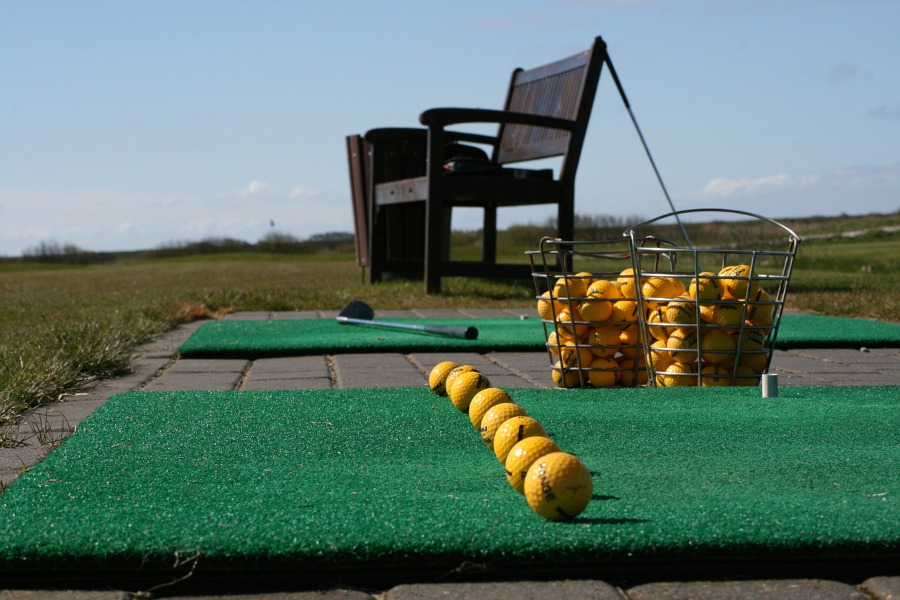
Track Golf Stats
Every golfer has strengths and weaknesses in their game. If you track your golf stats, you can better understand where your game thrives and where you need to work. Tracking strokes gained is the most effective way to track and plan out your practice sessions, but even traditional golf stats work.
I was watching a Korn Ferry Tour event once and followed a particular player throughout 18 holes. On every par 5, he went for the green in two. One time, he even took a driver out of his bag to hit a driver off the fairway to give himself a shot at going for the green.
Why did he do this?
His up-and-down percentage was so high that even if he didn’t make it to the green, he was going to get up and down for birdie. If that is the type of player you are, play with a similar strategy. However, if you are a golfer that is more accurate from 100 yards out, you should be laying up to this position.
Golf stats and infor much make us more knowledgeable and better able to implement on the golf course.
Have a Safe Swing and Safe Putting Stroke
You know those days when you are really struggling with something in your swing? You may feel like nothing can go right, and it’s better for you to head out and leave the golf course for someone else.
If you can develop a safe swing, one that is maybe more compact and controlled, you can usually save a round. It probably won’t be the lowest round you ever shoot, but you should be able to get out of there with a decent score.
The same thing can apply to your putting stroke. If you can’t make anything, go back to the basic mechanics that you know to be right. Work with HackMotion putting into establishing a consistent wrist angle that you can continually repeat.
When your putting game goes south, think about that wrist angle, maintaining it, and hitting one great putt after another.

Manage Risks
Risks on the golf course are worth taking. You may have experts tell you to stay conservative, and at times, this can be good information. However, if you want to go low, you have to take risks.
The key is to manage those risks and ensure that you are not unnecessarily taking these risks.
For instance, if you have a par 5 with water up the entire side and water in front of the green, you may decide it makes sense to just get on the green in 3.
However, if you hit the drive of your life and you have 200 or less into the green, you know you can hit that shot. Of course, there is still some risk involved, but it’s a calculated risk worth taking.
If you instead hit a terrible drive off the tee box and you have 260 yards into the green, chances are you have no business going for that pin!
Planning out your round the night before you head out to play will often help you get your golf course management strategy in check.
Course Conditions Matter
Course conditions need to be taken into account. After about a hole or two of play, you should have a good handle on what the wind is doing, how hard or soft the golf course is, and how the humidity or temperature is impacting ball flight.
The course conditions change from one round to the next, so you have to reset and analyze each round.
Certain golf course conditions will impact your entire game, but where you really see the difference is in the short game. If the greens are fast, you need to adjust where you land your chip and pitch shots and how hard you putt the ball.
Pay close attention to these conditions so that you can adjust your game accordingly.
Final Thoughts
Now that you have these 12 golf course management strategies and tips, you have nothing stopping you from reaching your goals on the course.
Take time to practice intentionally and take what you learn to the course. Use HackMotion to make you more confident in your golf swing and your ability to work the ball. The extra confidence you have on the course will be well worth the time you put in.
